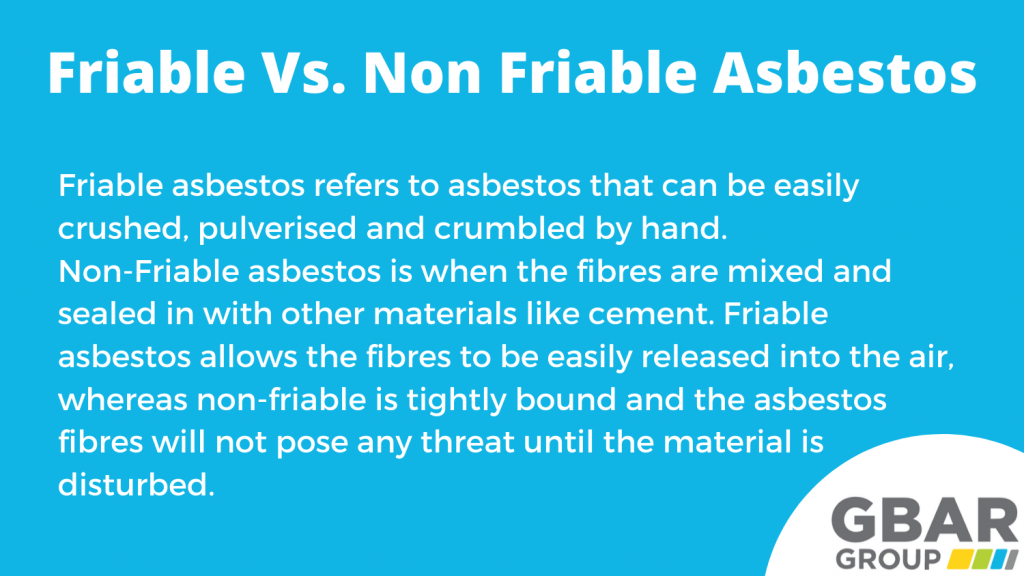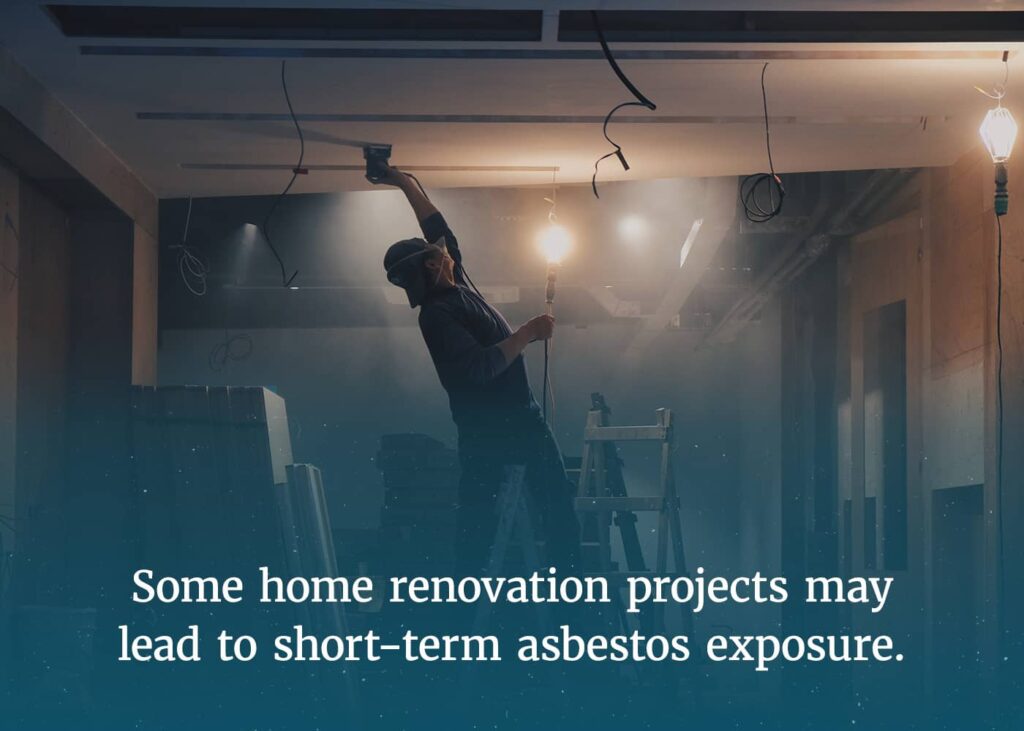If you find yourself faced with an asbestos problem on your property, it’s essential to know the popular methods of dealing with this hazardous material. Asbestos, often found in older buildings, poses significant health risks if disturbed. One effective method is asbestos encapsulation, which involves sealing off the asbestos-containing materials to prevent the release of harmful fibers. This article explores the process of encapsulation and its effectiveness in ensuring the safety of your property and its inhabitants. So, let’s discover how encapsulation can be a valuable solution for dealing with asbestos-related concerns.


Identification of Asbestos
Physical Inspection
When it comes to dealing with an asbestos problem on a property, the first step is to identify whether or not the material contains asbestos. A physical inspection is conducted to visually assess potential asbestos-containing materials. Trained professionals will carefully examine different parts of the property, including walls, ceilings, floors, pipes, and insulation, among others. They will look for signs such as the presence of crumbling or deteriorating materials, discolored or water-damaged areas, and unusual dust or debris. This initial physical inspection helps in determining the likelihood of asbestos presence and informs the necessary actions to be taken.
Asbestos Testing
While a physical inspection provides an indication of potential asbestos-containing materials, asbestos testing is essential for confirming its presence. Samples are collected safely and sent to accredited laboratories for testing. These laboratories employ specialized techniques, including polarized light microscopy (PLM) or transmission electron microscopy (TEM), to analyze the samples and detect asbestos fibers. Asbestos testing is a crucial step in accurately identifying asbestos and determining the appropriate methods for its removal or management.
Asbestos Removal
DIY Removal
If you suspect the presence of asbestos in your property, it is crucial to prioritize safety and consult professionals. Removing asbestos yourself without proper training, equipment, and knowledge of the legal requirements can be extremely hazardous. DIY removal can disturb the asbestos fibers, releasing them into the air and putting you and others at risk of inhalation. It is always recommended to hire professionals who are trained and equipped to handle asbestos removal safely. Their expertise ensures that all needed precautions are taken and that the asbestos is properly contained and disposed of, minimizing any potential harm.
Professional Removal
Hiring a professional asbestos removal company is the safest and most effective way to manage an asbestos problem on your property. These companies have the necessary experience, training, and equipment to handle asbestos safely and efficiently. They follow strict protocols and safety measures to contain and remove asbestos-containing materials. A professional asbestos removal process typically involves thorough inspection, containment of affected areas, removal, proper disposal of asbestos waste, and final clearance inspections to ensure the area is free from any residual asbestos fibers. It is crucial to choose a licensed and reputable asbestos removal company to ensure the job is done correctly and in compliance with legal requirements.
Legal Requirements
Dealing with asbestos also involves adhering to legal requirements. Laws and regulations regarding asbestos removal and disposal vary by jurisdiction, so it is essential to consult local authorities and familiarize yourself with the specific regulations in your area. Professional asbestos removal companies are well-versed in these legal requirements and will ensure that the necessary permits and procedures are followed. Ignoring or neglecting legal obligations can lead to severe consequences, including fines and legal liabilities. Therefore, it is crucial to prioritize compliance with all applicable laws and regulations when dealing with asbestos.
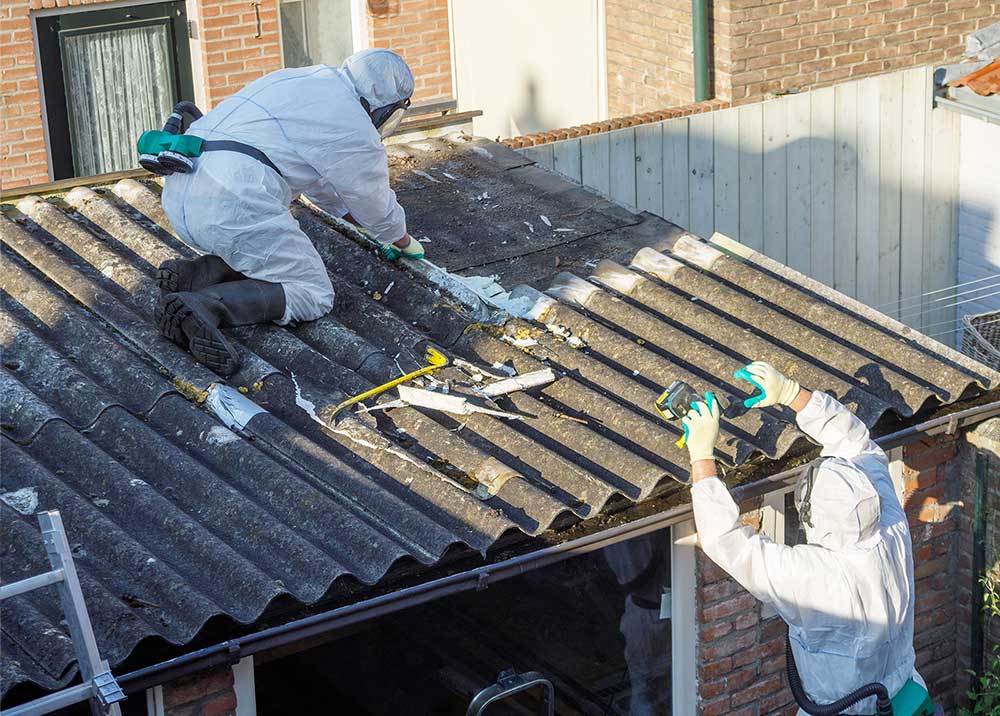

Encapsulation
Process of Encapsulation
Encapsulation is a popular method used to manage asbestos in situations where removal is not feasible or necessary. It involves applying an encapsulant, typically a specialized paint or coating, over the asbestos-containing material to create a protective barrier. The encapsulant seals the asbestos fibers in place, preventing their release into the air and minimizing the risk of exposure. The process starts with a thorough cleaning and preparation of the affected area, ensuring the surface is free from any dust or debris. The encapsulant is then carefully applied using appropriate techniques and equipment, creating a durable barrier that encapsulates the asbestos and prevents its deterioration.
Benefits of Encapsulation
Encapsulation offers several benefits when dealing with asbestos. Firstly, it eliminates the need for costly and potentially disruptive asbestos removal. Instead of completely removing the asbestos, encapsulation provides a more cost-effective solution by containing and isolating the hazardous fibers. Additionally, encapsulation reduces the risk of fiber release during renovation or maintenance activities, making it a practical solution for managing asbestos in buildings. Moreover, encapsulants can enhance the aesthetics of the treated surface, as they are available in various colors and finishes. Lastly, encapsulation is a relatively quick process, minimizing the disruption and downtime associated with other asbestos management methods.
Enclosure
Process of Enclosure
Enclosure is another widely used method for managing asbestos, particularly in areas where removal or encapsulation is not suitable. It involves constructing an airtight barrier around the asbestos-containing material, isolating it from the surrounding environment. The enclosure is typically made of durable materials, such as drywall or steel, and is designed to be a permanent structure, ensuring the asbestos remains undisturbed. The construction of an enclosure begins with properly assessing the area and designing an appropriate barrier system. The enclosure is then meticulously built, considering factors such as access points, ventilation systems, and fire safety measures, to maintain the integrity and containment of the asbestos.
Benefits of Enclosure
Enclosure offers various advantages for managing asbestos effectively. Firstly, it provides long-term containment of the asbestos, ensuring that it remains isolated and undisturbed. This prevents the release of asbestos fibers into the air, thereby reducing the risk of exposure and associated health hazards. Enclosure is particularly beneficial when removal is not feasible due to structural or financial constraints. Additionally, it preserves the original structure and aesthetics of the building, as the enclosure is constructed around the asbestos-containing material, rather than removing it entirely. Enclosure can be an effective solution for minimizing the risk of fiber release and maintaining the safety of occupants in areas where asbestos is present.
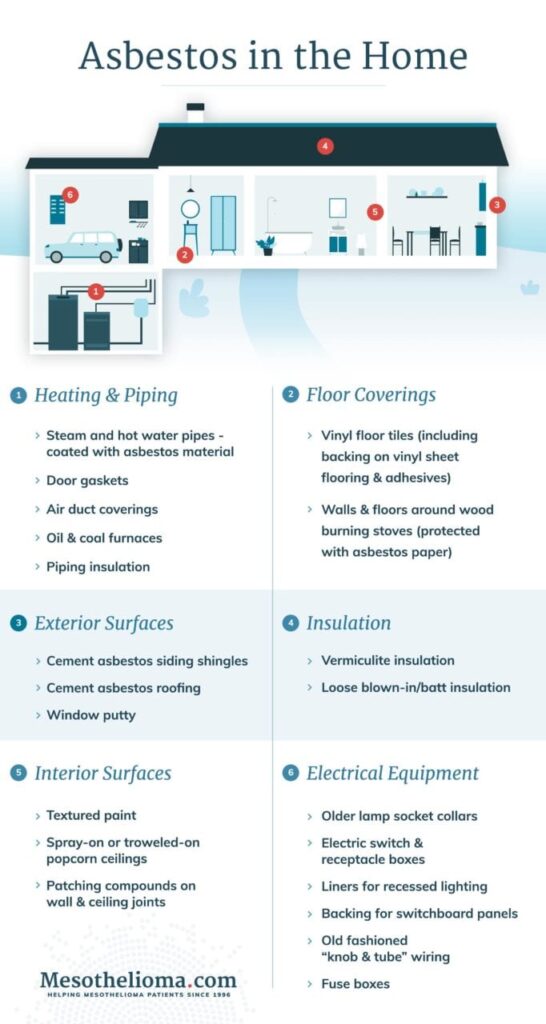

Sealing
Process of Sealing
Sealing, also known as bridging, is a method of managing asbestos that involves applying a sealant or coating to the surface of the asbestos-containing material. The sealant forms a protective layer that encapsulates the asbestos fibers, preventing their release into the air. The sealing process begins with a thorough cleaning of the surface to remove any loose debris or dust. The sealant is then carefully applied, covering the entire area with an even coat to ensure maximum effectiveness. The sealant can be applied using various techniques, such as spraying or brushing, depending on the type of material and the desired level of protection.
Benefits of Sealing
Sealing provides several benefits as an asbestos management method. Firstly, it is a cost-effective solution compared to removal or encapsulation, making it a viable option for situations where complete removal is not necessary. Sealing maintains the integrity of the asbestos-containing material, preventing its deterioration and the potential release of hazardous fibers. It also eliminates the need for extensive disruption or demolition, as the sealant can be applied directly to the existing surface. Sealing can be particularly useful in maintaining the safety of asbestos-containing materials in non-friable form, such as asbestos cement products. Overall, sealing provides an efficient and practical approach to managing asbestos effectively and minimizing the associated risks.
Asbestos Waste Disposal
Safety Protocol
Proper disposal of asbestos waste is of utmost importance to prevent the spread of hazardous fibers and protect public health. Asbestos waste should be handled and disposed of according to strict safety protocols. Personal protective equipment (PPE), such as disposable coveralls, gloves, and respirators, should be worn by individuals involved in the removal and disposal process. Asbestos waste should be securely sealed in leak-proof and labeled containers, ensuring it does not contaminate other materials or areas. It is essential to follow local regulations and guidelines for transporting and disposing of asbestos waste at approved facilities.
Licensed Contractors
Disposal of asbestos waste should only be entrusted to licensed contractors who are trained and experienced in handling hazardous materials. These contractors are equipped with the necessary knowledge and equipment to safely collect, transport, and dispose of asbestos waste. Hiring licensed contractors ensures that the waste is handled in compliance with all applicable regulations and that it is disposed of at authorized facilities. Engaging professionals for asbestos waste disposal minimizes the risk of improper disposal and subsequent environmental contamination.


Asbestos Awareness Training
Importance of Training
Asbestos awareness training is crucial for individuals who work in industries or occupations where they may encounter asbestos-containing materials. This training aims to educate individuals about the risks associated with asbestos exposure, how to identify potential asbestos-containing materials, and the necessary safety precautions to prevent exposure. It is essential for workers to be aware of the potential presence of asbestos in their workplace and to understand the proper protocols for handling and managing the material. Asbestos awareness training helps individuals recognize and respond appropriately to asbestos-related hazards, ensuring their safety and the safety of those around them.
Benefits of Training
Asbestos awareness training offers numerous benefits in terms of safety and compliance. By providing individuals with knowledge about asbestos, its health effects, and safe handling practices, training helps to prevent accidental exposure and minimize the associated health risks. It empowers workers to identify potential asbestos-containing materials and report them to the appropriate authorities. Additionally, training enables individuals to take appropriate safety measures when working in areas with asbestos, reducing the likelihood of disturbing the material and releasing harmful fibers. Compliance with asbestos awareness training requirements is also a legal obligation in many jurisdictions, making it indispensable for employers and employees alike.
Certification
Completion of asbestos awareness training is often recognized through certification. Certification serves as proof that an individual has undergone the necessary training and possesses the required knowledge and skills to handle asbestos-related situations safely. It is useful for employment purposes, as employers may require proof of certification when hiring individuals to work in environments where asbestos might be present. Certification provides individuals with credibility and demonstrates their commitment to safety and compliance. Renewal or ongoing training may be required to ensure individuals stay up to date with new information and regulations regarding asbestos management and safety protocols.
Asbestos Management Plan
Creating a Plan
An asbestos management plan is a comprehensive document that outlines the strategies and procedures for identifying, assessing, and managing asbestos within a property or facility. The creation of an asbestos management plan involves several steps. Firstly, a thorough survey and assessment of the property are conducted to identify asbestos-containing materials and assess the potential risks associated with them. Based on the survey findings, the plan is then developed, outlining specific actions to be taken to ensure the safe management of asbestos. The plan typically includes details on regular inspections, maintenance procedures, employee training, and procedures for managing asbestos-related incidents. It is essential that the plan is tailored to the specific needs and requirements of the property or facility.
Updating the Plan
An asbestos management plan is not a one-time document but an ongoing process that requires periodic updates. Asbestos-containing materials may deteriorate over time or new areas of concern may arise. It is crucial to regularly review and update the plan to reflect any changes or developments. The plan should be revised based on the results of periodic inspections or any maintenance or renovation activities that may affect the asbestos. Any new information or regulations regarding asbestos management should also be incorporated into the plan. Regular updates to the asbestos management plan ensure that it remains current, effective, and in compliance with the latest requirements and best practices.
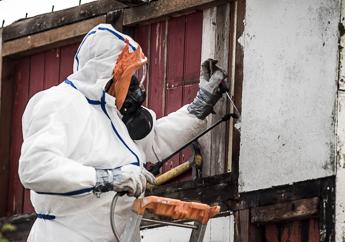

Ongoing Monitoring and Inspection
Periodic Inspections
Once asbestos has been identified and managed, ongoing monitoring and inspections are essential to ensure its continued containment and safety. Periodic inspections involve a systematic review of the property to assess the condition of any asbestos-containing materials and identify any signs of deterioration or damage. These inspections are conducted at regular intervals by trained professionals who carefully examine the identified areas. The frequency of inspections may vary depending on factors such as the nature and condition of the asbestos materials, the occupancy of the property, and local regulations. Periodic inspections help identify any potential risks or issues promptly and enable timely action to be taken to prevent exposure and maintain a safe environment.
Air Monitoring
Air monitoring is a crucial element of ongoing asbestos management. It involves collecting air samples from the environment and analyzing them to determine the concentration of asbestos fibers present. Air monitoring helps assess the effectiveness of containment measures, such as encapsulation or enclosure, in preventing the release of asbestos fibers into the air. Regular air monitoring also provides valuable data on the overall air quality and the level of risk associated with asbestos within a property or facility. By monitoring the air for asbestos fibers, necessary adjustments or additional control measures can be implemented to ensure continued safety and compliance with applicable regulations.
Public Education and Awareness
Informing Residents
Public education and awareness are vital components of managing asbestos-related issues within a community. Informing residents about the hazards associated with asbestos and providing guidelines on how to identify and manage asbestos-containing materials in their homes or workplaces can help prevent accidental exposure. Educational materials, such as brochures, fact sheets, and online resources, can be distributed to residents, outlining the steps they can take to protect themselves and their families. This information should emphasize the importance of professional consultation and assistance when dealing with asbestos, as well as the legal and safety considerations involved in its management and disposal.
Raising Awareness
Raising awareness about asbestos-related risks and the proper management of asbestos is essential not only for residents but also for workers, contractors, and other professionals who may encounter asbestos in their line of work. Awareness campaigns can be organized to reach out to these individuals and provide them with the necessary information and tools to handle asbestos safely. Seminars, workshops, or online training can be conducted to educate participants about the potential risks, legal requirements, and proper procedures for asbestos management. By raising awareness and promoting safe practices, the community can work together to minimize the risks associated with asbestos and create a safer environment for all.
In conclusion, dealing with an asbestos problem requires a comprehensive approach that encompasses identification, removal, encapsulation, enclosure, waste disposal, awareness training, and ongoing monitoring. Whether it involves hiring professionals for safe removal, considering encapsulation or enclosure as management methods, following legal requirements and safety protocols for waste disposal, or educating the public about asbestos risks, every aspect is crucial for the protection of individuals and the community. By being aware of the potential hazards associated with asbestos and following the appropriate procedures, a safer and healthier living and working environment can be created.


